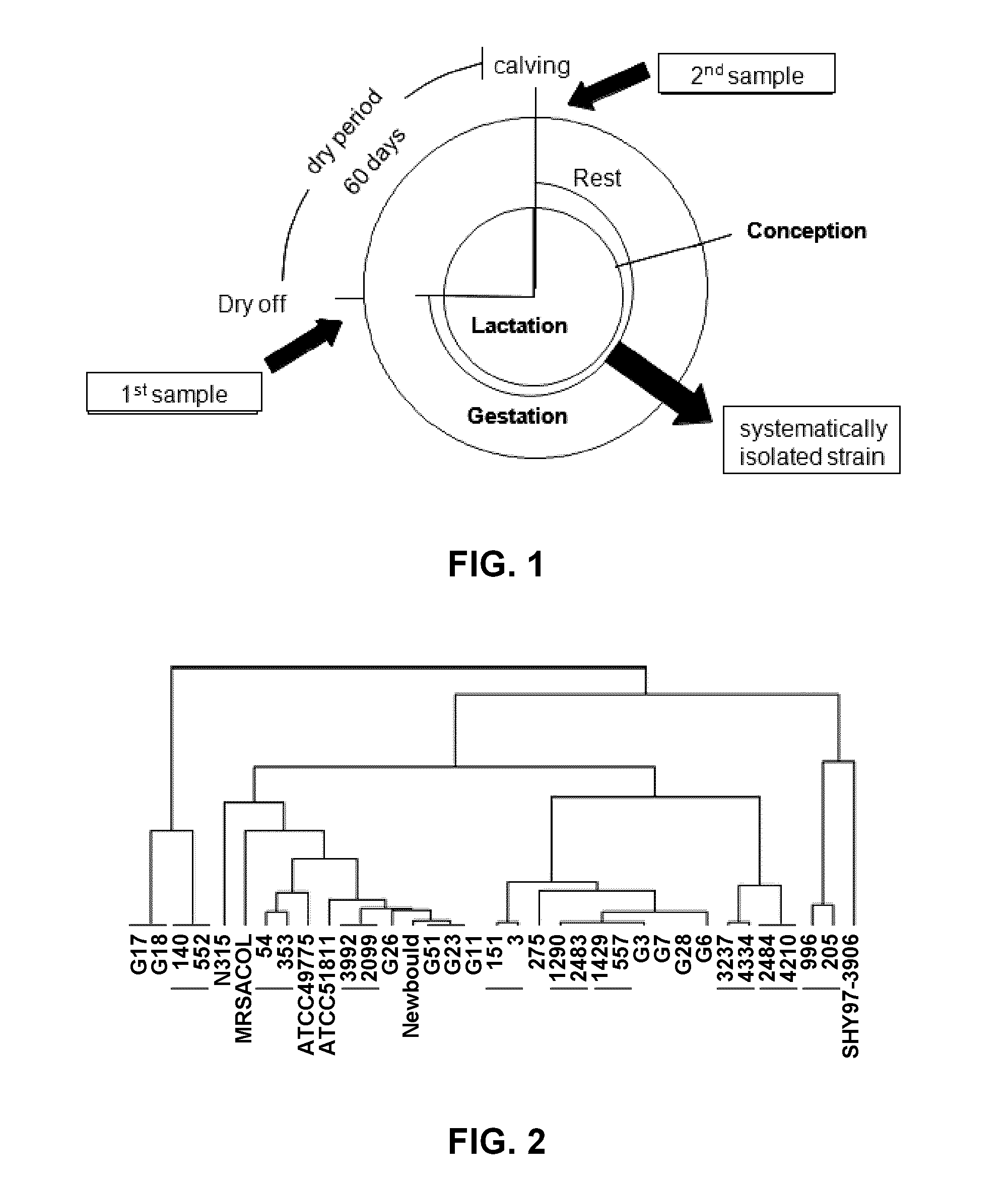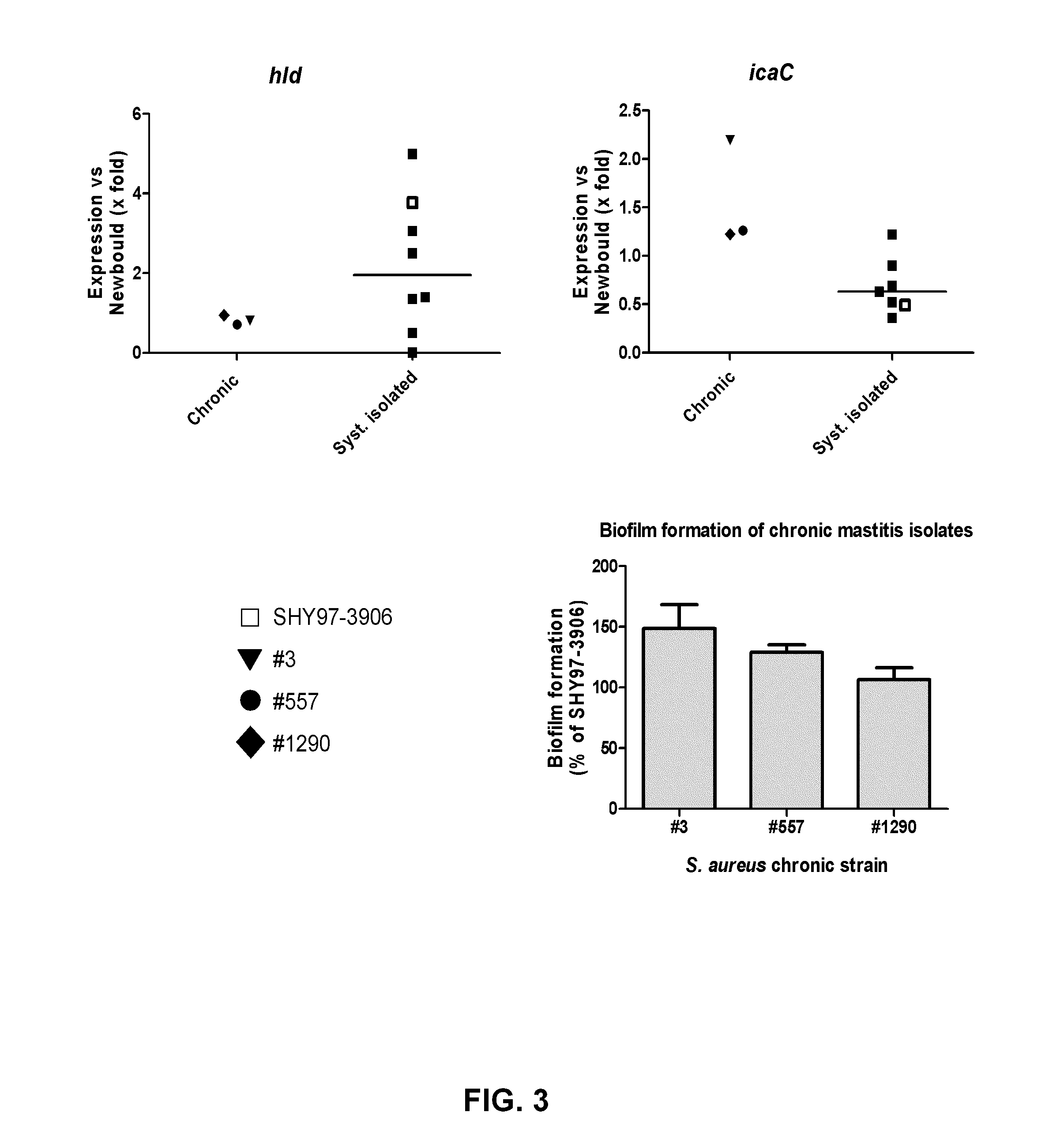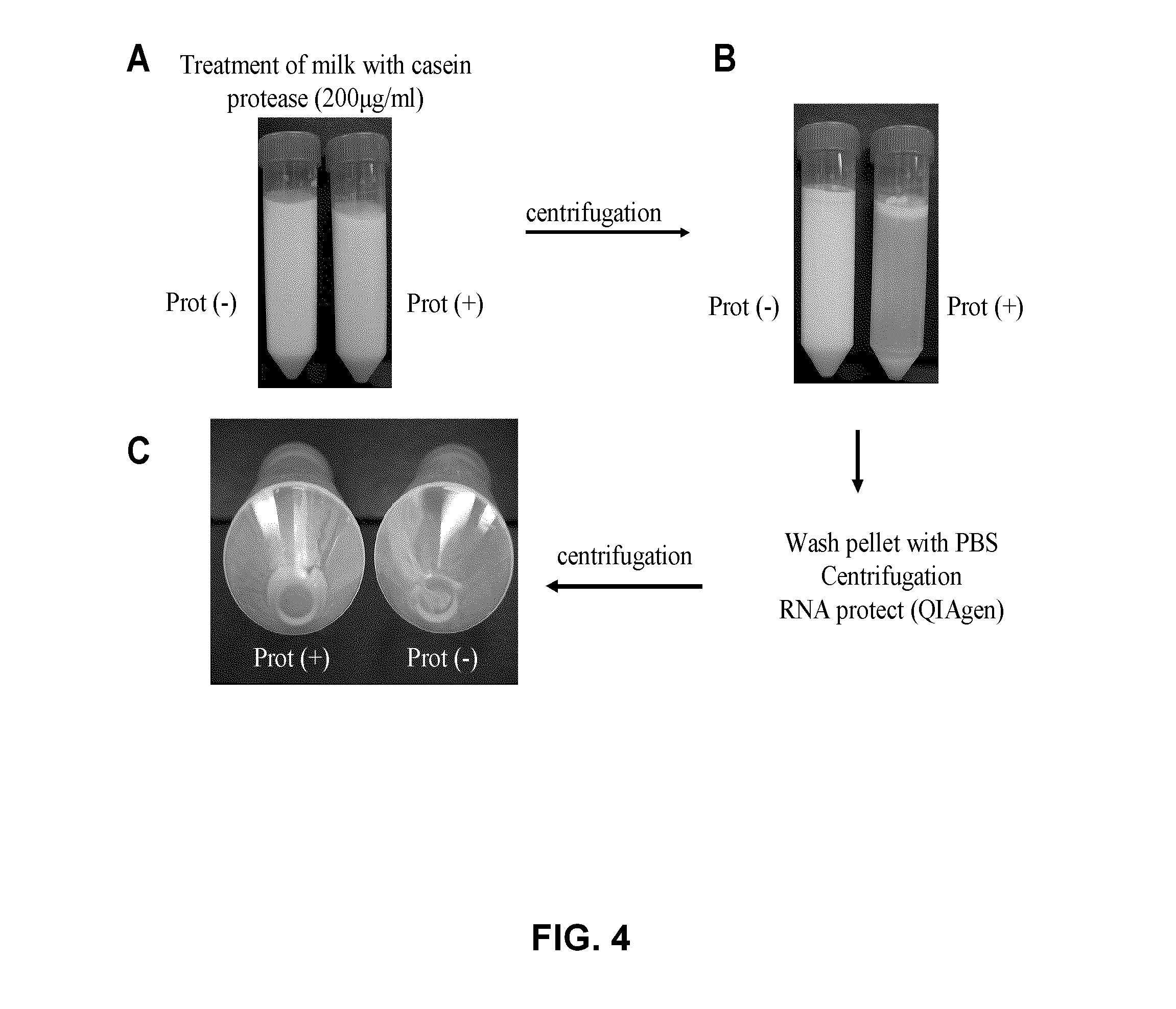Bacterial vaccine components from Staphylococcus aureus and uses thereof
a technology of staphylococcus aureus and components, applied in the field of new vaccine targets and components, can solve the problems of frequent relapse, difficult treatment, poor predictor of therapeutic efficacy of chronically infected cows,
- Summary
- Abstract
- Description
- Claims
- Application Information
AI Technical Summary
Benefits of technology
Problems solved by technology
Method used
Image
Examples
example 1
Materials and Methods
[0118]Staphylococcus aureus strains. Two types of Staphylococcus aureus isolates from cows were used in this study: chronic and systematically isolated strains (i.e. strains isolated from bovine mastitis with clinical signs (high somatic cell counts (SCC) in milk or signs of inflammation). Chronic isolates were from cows shedding a genetically identical S. aureus strain >55 days apart, between dry off and calving as illustrated in FIG. 1 (1st and 2nd samples). Systematically isolated strains were taken at calving or in the lactation period from cows shedding high somatic cell counts (SCC) in milk or signs of inflammation (mastitis). For the experimental infections described further below, 3 chronic strains were used (#3, #557 and #1290) and were compared to SHY97-3906, a previously described strain isolated from a typical mastitis case with clinical signs (Diarra et al., 2002) and of a known in vitro transcriptome (Allard et al., 2006). The collection of isolate...
example 2
Validation of Chronic S. aureus Strains
[0157]Comparative genomic hybridization data for the members of chronic isolate pairs collected from cows >55 days apart between dry-off and calving (FIG. 2, underlined isolates), show a high genetic relatedness. Unrelated reference strains (S. aureus N315, MRSACOL, Newbould, ATCC 49775, ATCC 51811 and SHY97-3906) and isolates randomly or systematically picked from bovine mastitis cases with clinical symptoms during lactation (annoted “R” in Table I above) are also shown in FIG. 2 for comparison. This analysis confirmed that the isolates that were collected from the same cow and the same quarter >55 days apart, were genetically identical. It is clear that the chronic isolates #3, #557, and #1290 used in the studies described herein have the ability to cause an IMI and persist in the mammary gland for a long period of time (i.e., are able to cause a chronic IMI).
[0158]FIG. 3 shows Q-PCR analyses reporting the relative level of gene expression fo...
example 3
Efficient Isolation of Bacteria from the Milk of Experimentally Infected Cows
[0159]The method used for isolating bacteria from mastitis milk samples is illustrated in FIG. 4. The bacterial pellet recovered from milk treated with proteases (prot+, FIG. 4) was much larger and allowed greater amounts of microbial RNA to be isolated for DNA microarray and qPCR experiments compared to that obtained from the untreated bacterial pellet (prot−, FIG. 4). A DNA microarray experiment comparing the transcriptional profiles of S. aureus grown in vitro in milk treated with casein protease to that of S. aureus cells grown in untreated milk did not show significant gene modulation. Quantitative PCR analysis for 4 genes expressed in S. aureus grown in an iron-restricted medium in vitro and under iron-rich conditions show that a 2-hour delay before RNA extraction (time period between milking and RNA extraction) did not affect the observed modulations in expression of iron-regulated genes (isdB, ferri...
PUM
| Property | Measurement | Unit |
|---|---|---|
| volume | aaaaa | aaaaa |
| volume | aaaaa | aaaaa |
| contact time | aaaaa | aaaaa |
Abstract
Description
Claims
Application Information
 Login to View More
Login to View More - R&D
- Intellectual Property
- Life Sciences
- Materials
- Tech Scout
- Unparalleled Data Quality
- Higher Quality Content
- 60% Fewer Hallucinations
Browse by: Latest US Patents, China's latest patents, Technical Efficacy Thesaurus, Application Domain, Technology Topic, Popular Technical Reports.
© 2025 PatSnap. All rights reserved.Legal|Privacy policy|Modern Slavery Act Transparency Statement|Sitemap|About US| Contact US: help@patsnap.com



